Burn, Baby, Burn: Grady Corbitt and Colin McElroy on ‘Meet Us At The Dumpster Fire’

Taking stock of America in 2018, from the recent heat waves in New York and Los Angeles to the daily missives from the President’s Twitter feed, a dumpster fire seems like an apt metaphor. At least that’s what artists and curators Grady Corbitt and Colin McElroy argued in their recent group exhibition Meet Us At The Dumpster Fire at Los Angeles’s That That Gallery.
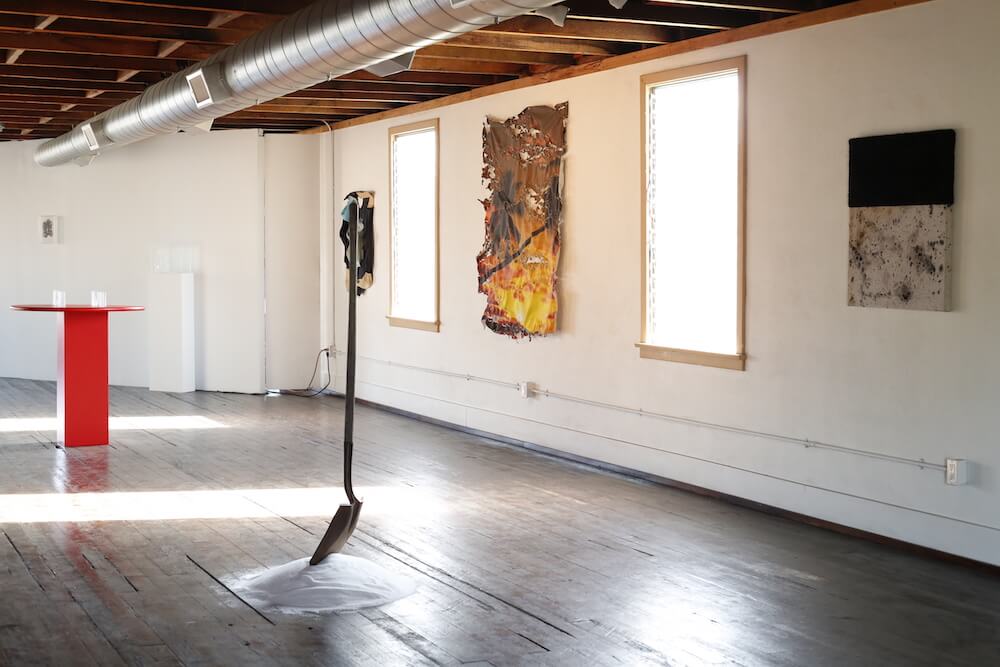
Installation view
That That Gallery, Los Angeles
“Upon scrutinizing the current state of America the whole damned place could use an alibi,” begins Corbitt and McElroy’s curatorial statement. Like the statement implies, the exhibition captured the apocalyptic feeling of our era, but this doesn’t mean it was fatalistic. Instead, Meet Us At The Dumpster Fire reimagined dystopia as a potential communal space by bringing together twenty-five artists from California, New York and as far as Costa Rica. From foreboding and psychedelic to joyful and optimistic, the artworks included a literal engagement with trash receptacles like Shelter Serra’s sculptural garbage can lid, an unexpectedly soothing watercolor of flowers by Darryl Westly and Jo Shane’s site-specific installation, which brought a parachute into the gallery to reference both emergency and escape.
Though Meet Us At The Dumpster Fire was both Corbitt and McElroy’s first large-scale curatorial project, the duo preserved the D-I-Y familial energy that they developed in smaller apartment exhibitions. More than just political commentary, they saw the exhibition as a way to bring like-minded artists and viewers together, maintaining a sense of laid-back fun, even in fraught times.

Installation view
Courtesy of the artist and That That Gallery, Los Angeles
I met with McElroy and Corbitt on the rooftop of Corbitt’s Soho apartment building to reflect on the exhibition over beers. Fittingly overlooking the former Trump Soho, we discussed the development of the show’s concept, the enormous roster of artists, and how even the police showed up to their dumpster fire.
How did you initially conceive of Meet Us At The Dumpster Fire?
Grady Corbitt: Colin had a solo show at That That Gallery last year, which is run by Sam McCurdy who is also an artist. This past winter in New York was so long and on a down gray day, Sam called. She’s always this voice of brightness and positivity. We talked about Colin’s show and I said, “We have to do that again.” She said, “Well, what do you want to do? How about you guys curate a show?” I talked to Colin who was like, “Sure. When?” And it started from there.
Colin McElroy: We came up with the theme before we came up with the title. It was all based off a mood board we made in the photo section of our phone. We were thinking of this hippie cult commune called the Brotherhood of Eternal Love, which was a big distributor of acid in the 1960s and 1970s in Laguna Beach, California, where my parents live now. We were thinking about the whole dystopia before the rush of money came down to Southern California and suburbanized everything. Later we were sitting around, having a few drinks, and thought, “Ok, where would everyone be meeting at this pre/post-apocalyptic time?” Obviously by a dumpster fire. That’s where the title came from.
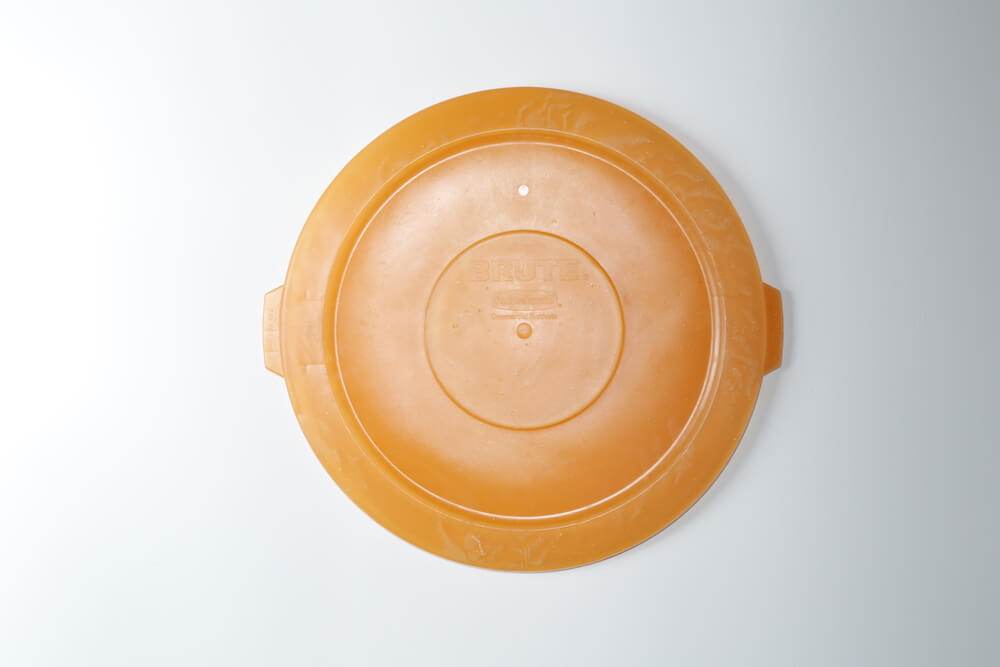
BRUTE Garbage Can Lid (2014)
Cast resin
32″ x 34″ x 2.5″
Courtesy of the artist and That That Gallery, Los Angeles
GC: It’s also a take on the political climate. The shit show this country is in right now and what it’s become.
I’m glad you mention politics. The exhibition reflects the general anxiety of the times, as laid out in your curatorial statement, without directly naming Trump. Why did you choose to leave out the specifics of the political climate?
GC: There’s a bigger picture. I was trying to write that statement from almost a screenwriter point of view, painting this scenario with people hanging out. I wanted to keep it more positive and fun rather than dark and serious.
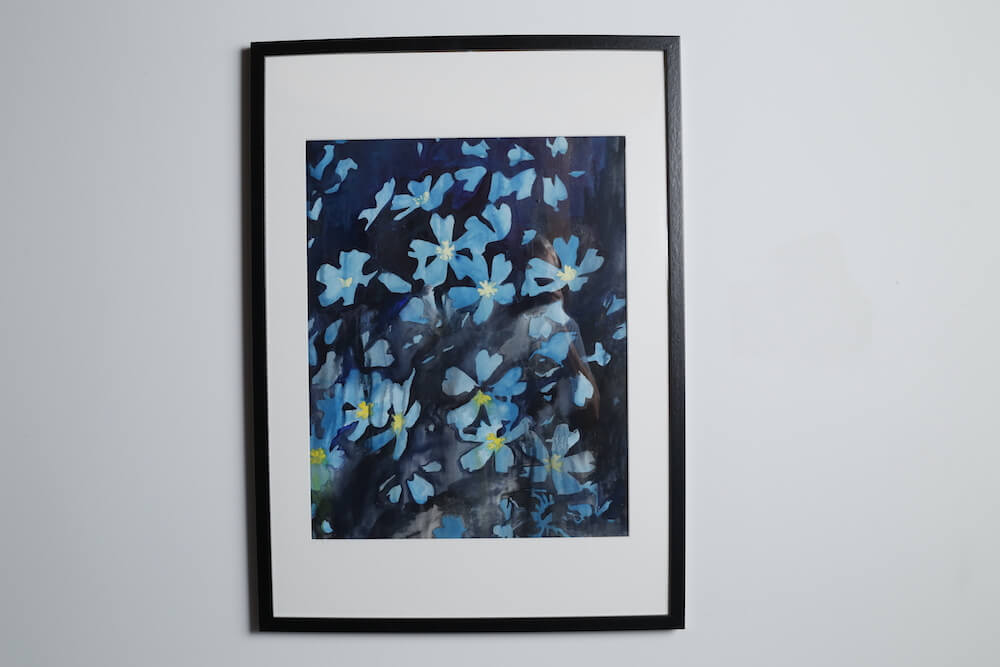
Courtesy of the artist and That That Gallery, Los Angeles
The exhibition features twenty-five artists. Not only coming from different places, the artists also work in a diverse range of mediums and take on a wide variety of subject matter. How did you approach bringing all the artists together?
CM: We basically branched out to our friends first and they said, “You should check out this person.” It was just word of mouth. We got to meet all these new people, which was amazing.
GC: Right away, we made a short list. We both had artists we wanted to work with. We did a couple shows together before, but nothing on this scale. It was a great range of people with different artistic backgrounds. This was a few of the artists’ first show and then, there were some proper career artists. We were also dealing with like-minded people. The artists were really receptive to the concept. Some people would ask, “What’s it about?” and we’d show them the mood board. They’d immediately say, “I have this piece or that idea.” Some artists even started working with different materials they don’t normally work in.
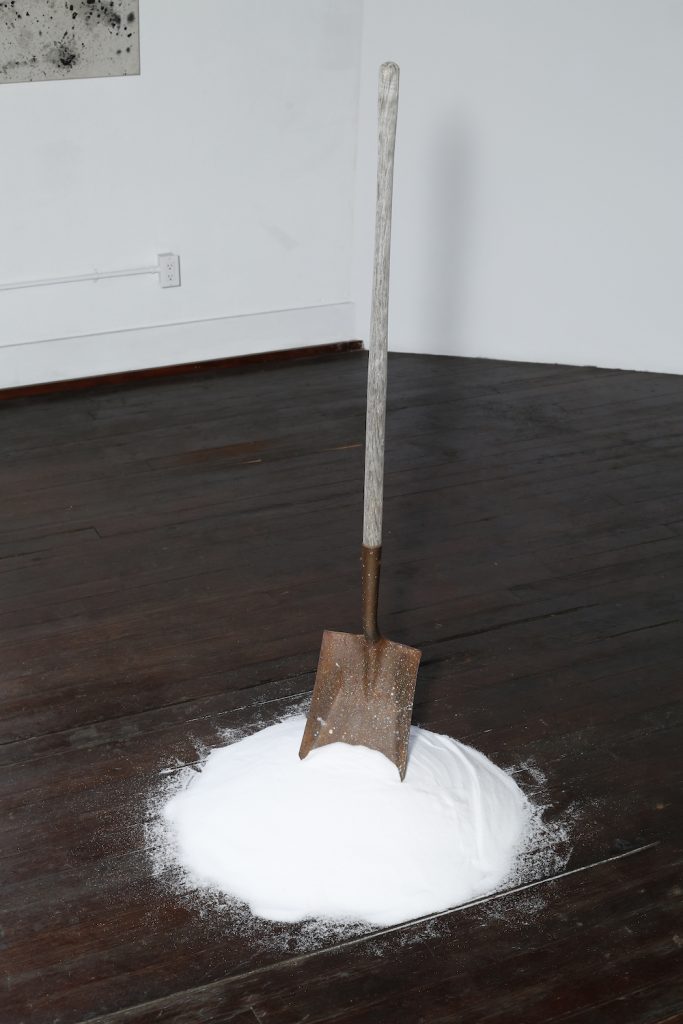
Courtesy of the artist and That That Gallery, Los Angeles
You also have a number of site-specific pieces, from Kevin Gray’s sculpture with a shovel freestanding in salt to Jo Shane’s Escape Mechanism 2 (Observation Deck). It sounds like you gave the artists room to experiment.
GC: Jo Shane is someone who had this massive idea during our studio visit and it even changed once she got to the gallery. She adjusted her work to the space in a completely different way. Her piece includes this big parachute, which she was going to put on the ground, but instead, she hung it from the ceiling, draped on this sky background. She ended up securing this one little area of That That to create her own environment that you could get in and underneath.
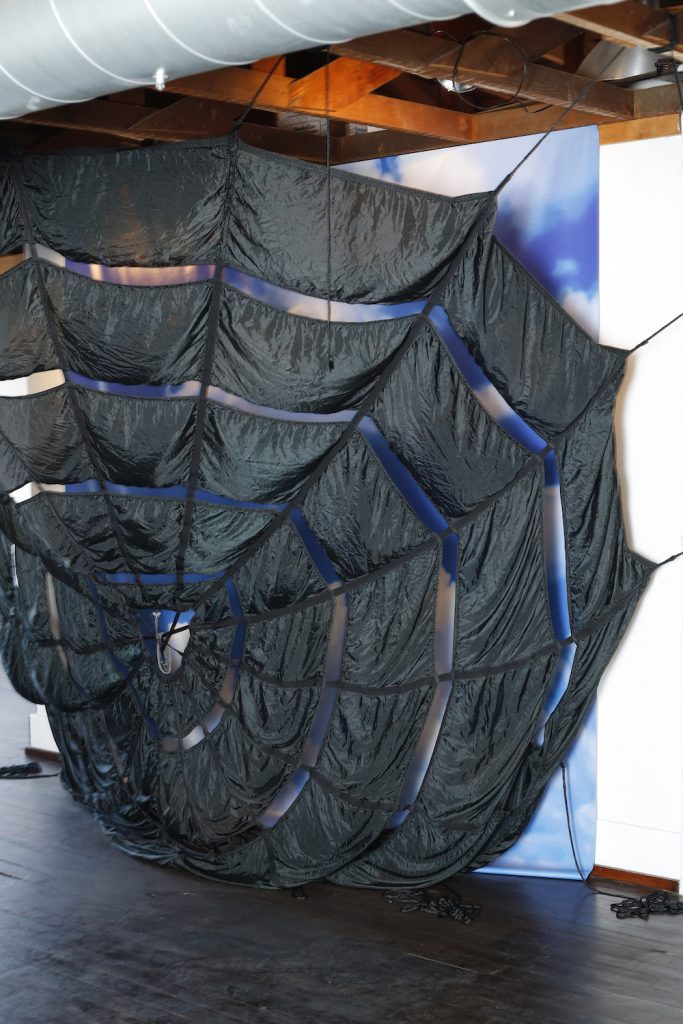
Escape Mechanism 2 / Observation Deck, (Part 1), 2018
Parachute, inkjet on vinyl
Dimensions variable
Courtesy of the artist and That That Gallery, Los Angeles
CM: Her piece is one of my favorites for sure. There’s this military vibe with that parachute. She also has these holographic postcards that go with the installation, which show the Twin Towers getting hit by planes. She said to me, “What if everyone in the towers had parachutes?” It’s also about parachuting into this crazy world we’re living in.
GC: When we went to her studio initially, she said, “I have all these collages, but really I’ve been thinking about this.” And she showed us a drawing and photo of this installation. I was like, “That’s badass. If you think you can pull it off, do it.” She did and made it even better than she initially thought herself. Now she’s working on another parachute piece for a show. It’s become a new thing for her.
While Shane’s piece certainly exemplifies the sense of dread that runs through the show, other works point to lighter moments. Did you want to make sure it wasn’t all doom and gloom?
CM: Yeah. It’s pretty funny because all the artists have very fun and positive vibes, but the work is emotional in many ways. There’s such a range of artists and work. We even did a piece together under the name Thomas Carter. That’s our middle names put together. Everyone was like, “You have to put something in the show,” but we weren’t sure if we wanted to do that.

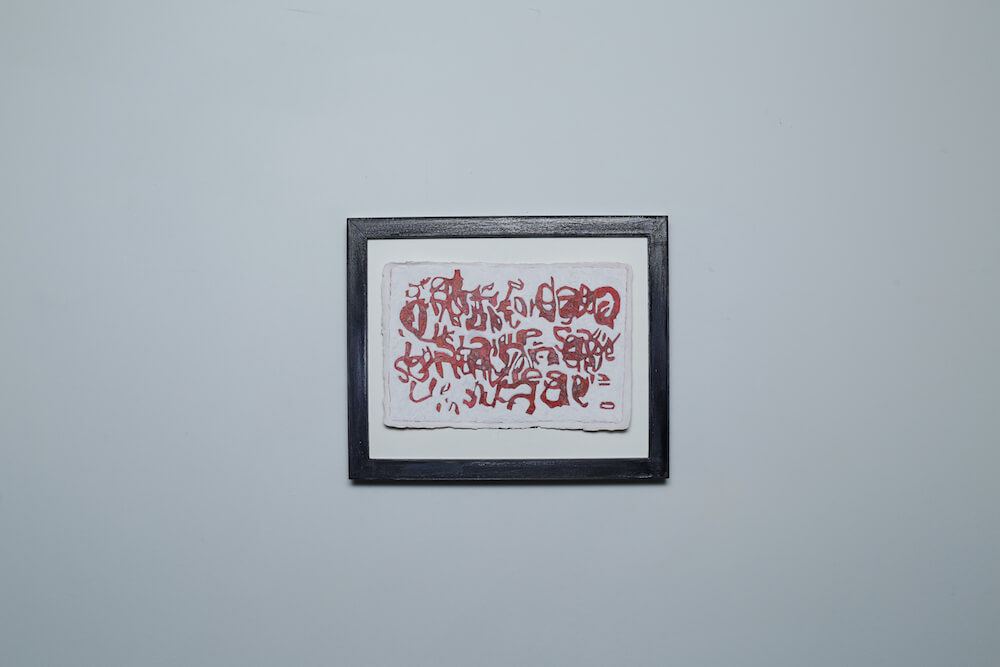
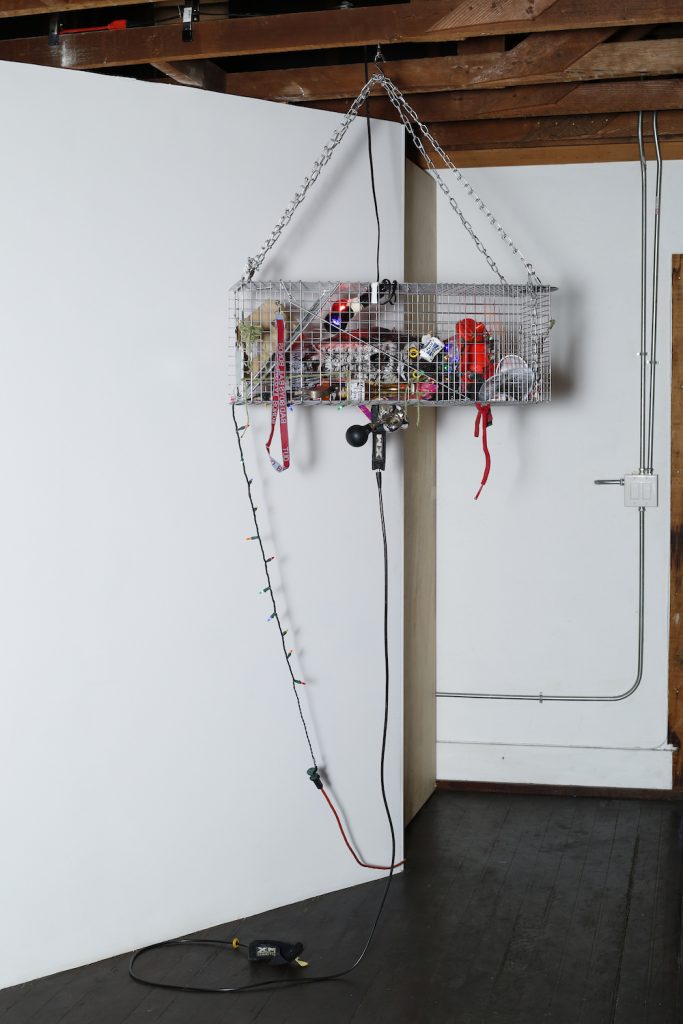
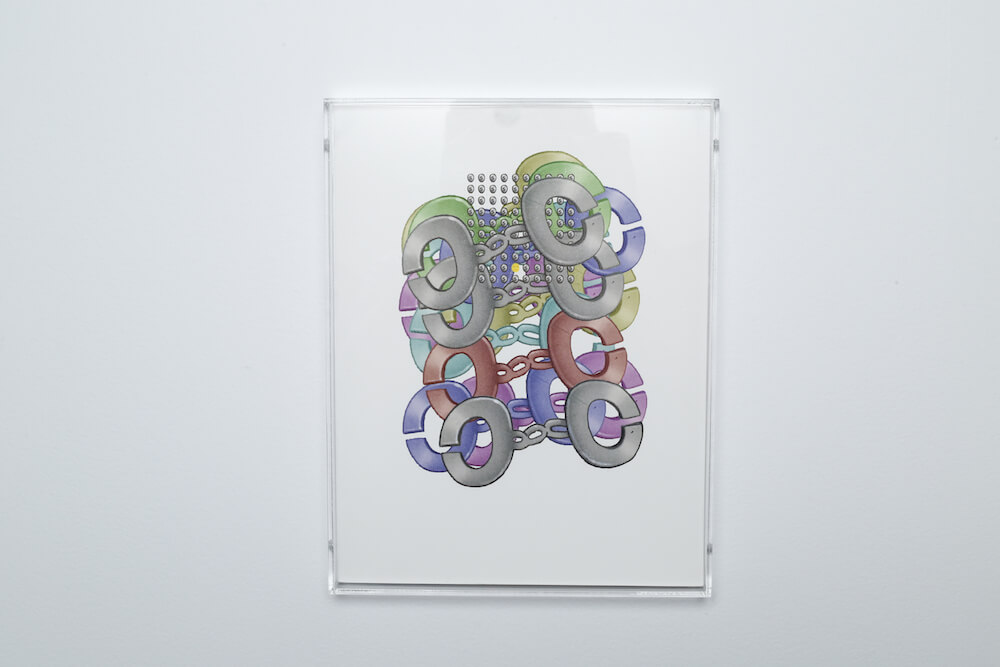
GC: We share a studio in New York and have similar taste and humor. We’re talking about everything all the time. So with the piece, we were listening to the song “The Safety Dance” when setting up so we named it after that. It’s one of those animal friendly traps in which you catch and release animals through a back gate.
CM: We stuffed it with one of those scarecrow owls with some red and blue lights, a bottle of Corona, surfboard fins and Christmas lights. We had a surfboard leash hanging off of it.
GC: It was if a raccoon got trapped and thought, “Fuck it. I’ll make this place my own.” People were asking, “Who made this?” We’d say, “Thomas Carter. He’s from Arizona.” [Laughs]
CM: That was pretty funny and it felt good to put some comedy in the show.

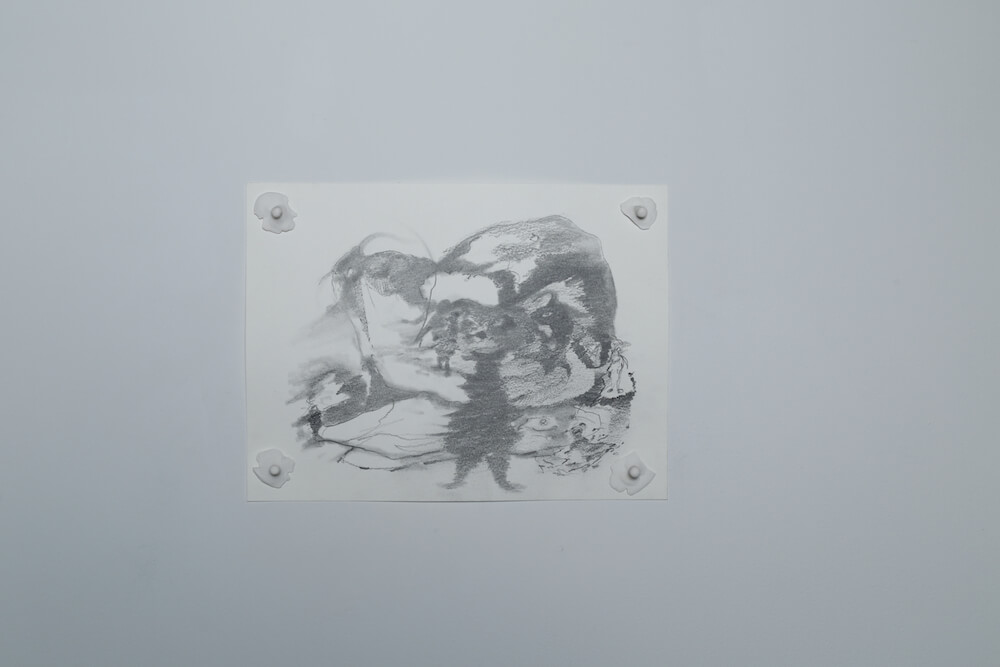
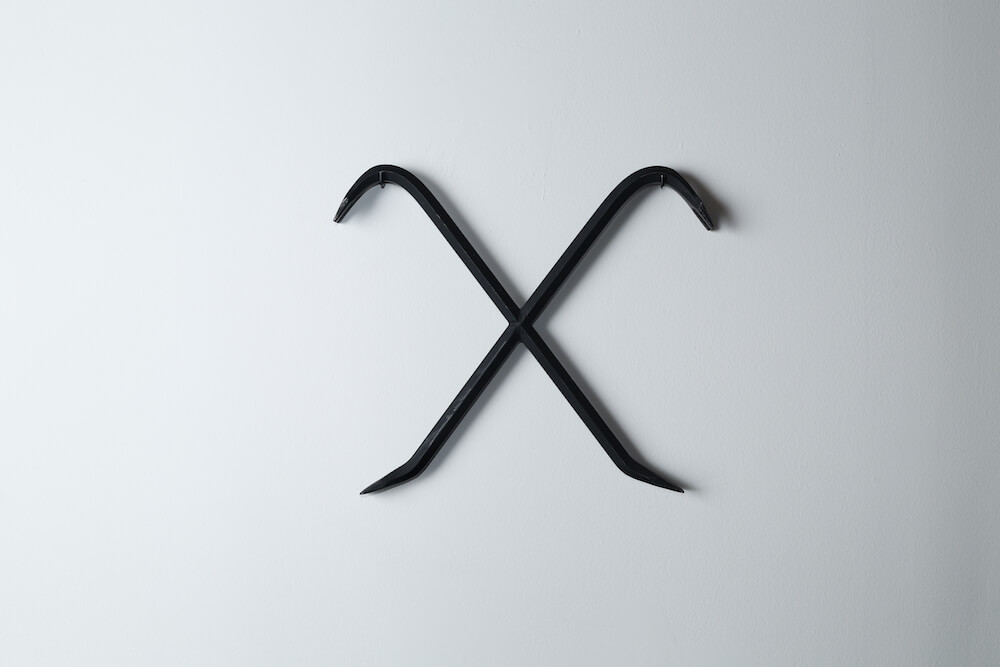

Do you plan on doing more shows in the future?
Both: Yes!
GC: This was the first time we did something of this magnitude, quality and range of people. And it was so positive. The best part of curating the exhibition was the studio visits–meeting these artists we may not have met before. Maybe we saw a photo on their website or portfolio, but in the studio, we got to discover what other materials they work with and about their studio practice. We got to chat with them not just about the art, but life. I want to do more and keep pushing it. When I see art that I like and people that I respect, I think how cool it would be to work with them in some way.
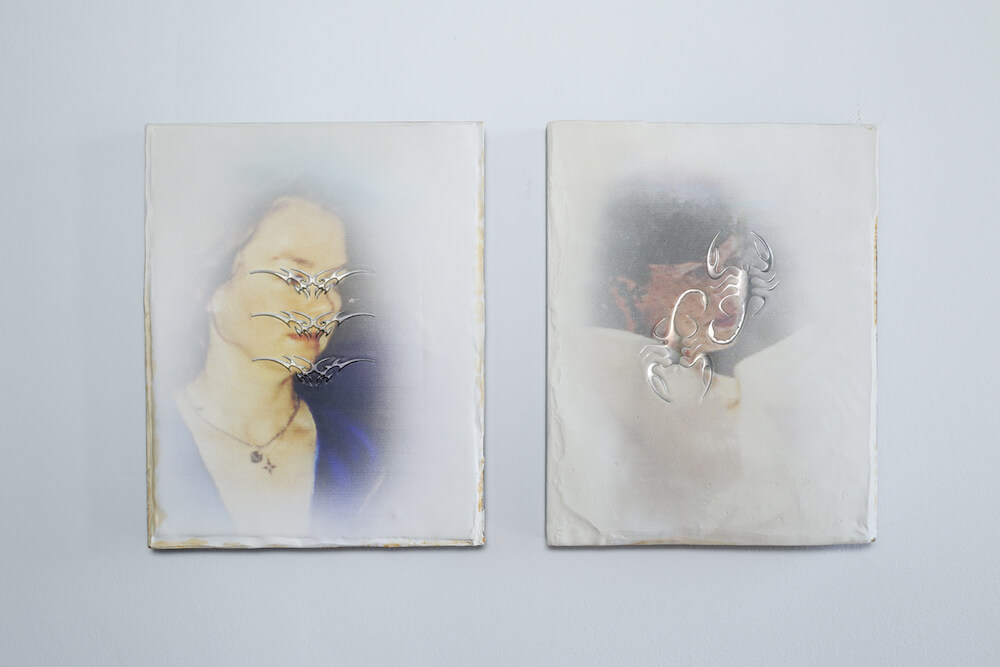

It seems like you’re really interested in bringing people together–not just the artists, but also viewers–around the art. Was that part of the impetus in curating the show?
GC: It’s something to get excited about. I find if I look too much on social media or the news, I get bummed. Look beyond the surface of the scrolling that everyone is so fixated with these days. I like the silent interaction when the viewers look at a specific piece or take in the whole show. Maybe they’re not necessarily into art, but they come to support. You change their mind or open their eyes to something they weren’t expecting.
CM: Even the cops came to the show. They tried to shut down the opening. They ran in all freaked out with their guns blazing basically. Once they looked around, they walked in like, “Oh sorry, what’s going on in here?” They weren’t expecting an art show.
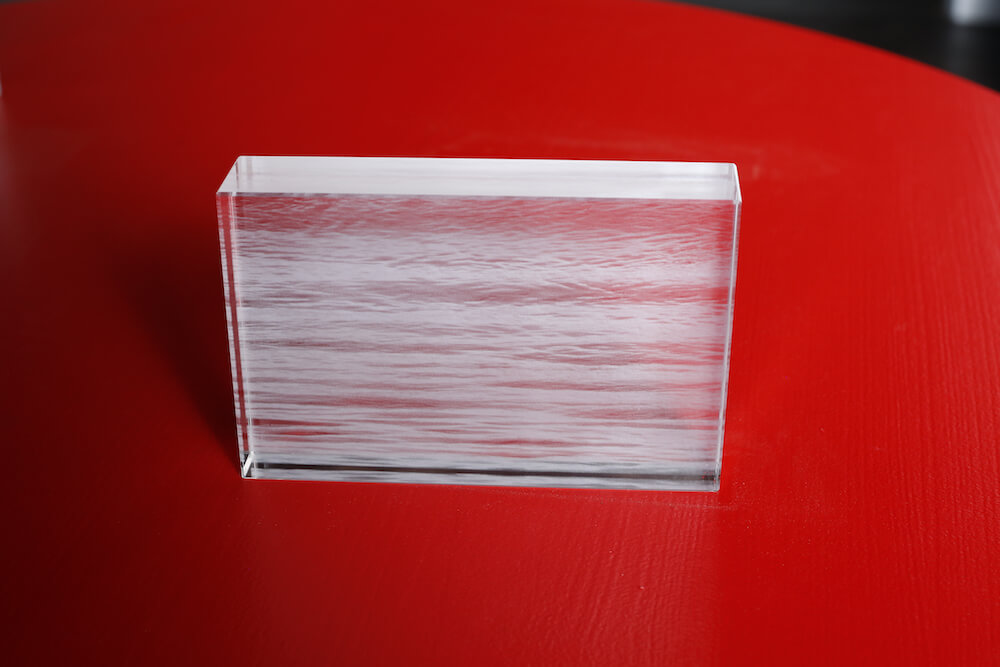
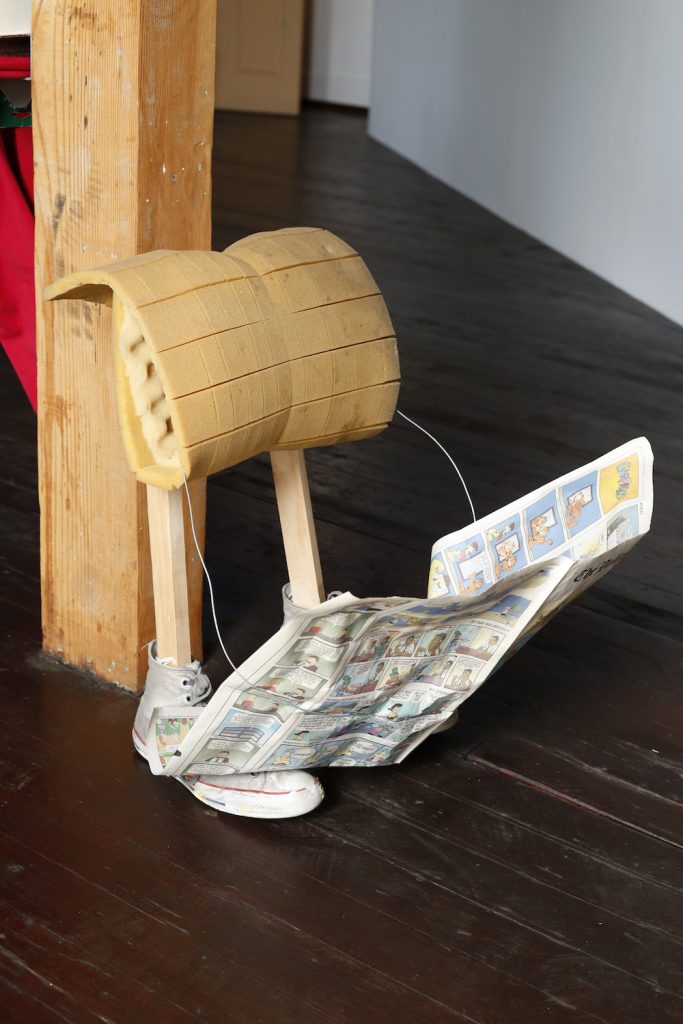
GC: The neighborhood the gallery is in is changing. It didn’t used to be the best. It’s very industrial. The cops came in like a SWAT team like ten deep, thinking they were going to a dogfight or something. Within three minutes of meeting Sam in the back, they started walking around and having a laugh at the end.
CM: It really put the icing on the cake. The cops even came to the dumpster fire.
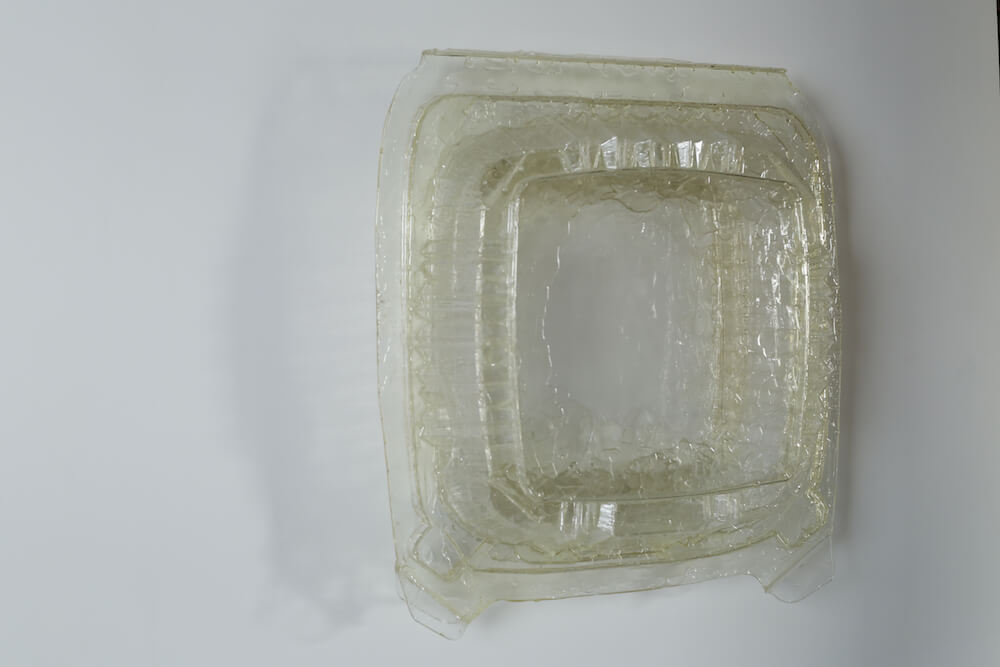

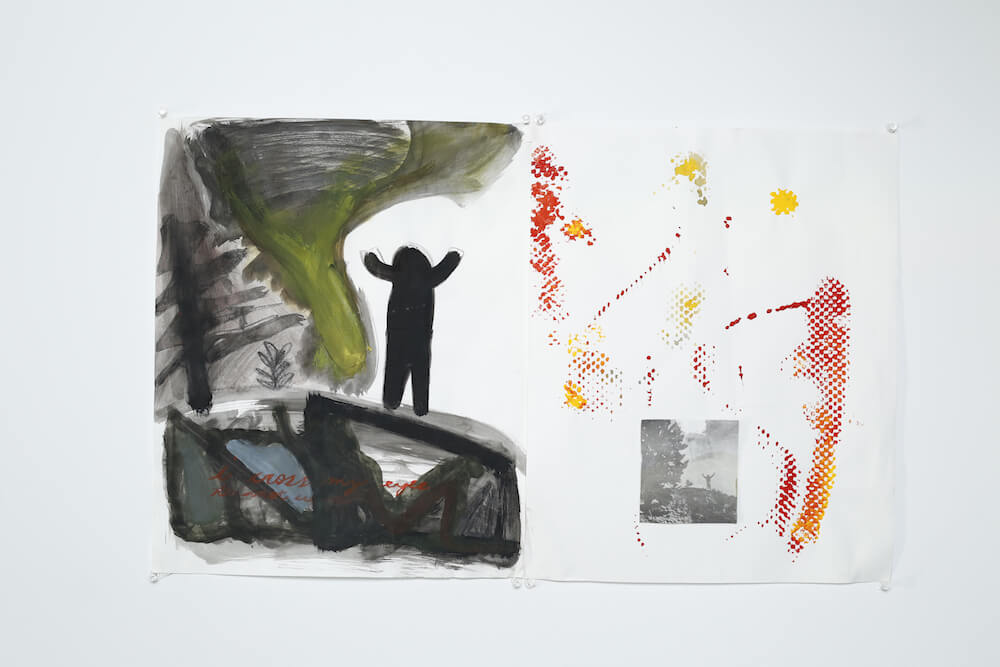
Responses